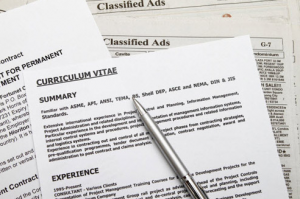10 Simple Steps to Professional Resume Creation

1. Contact Information- Why this may seem simple and straightforward, many job applicants fail to include their most up-to-date information. At the top of your resume, be sure to include your full name, mailing address, telephone number (cell and/or home), and active email address. You can choose to center your contact information or you can center left, using different sizes of font to create visual interest.
2. Establish Objectives- Before writing your resume, give some thought at to what kinds of positions you are applying for, your qualifications and your overall job search objectives. As you begin to compile information about yourself and your career history, begin by writing it all down; you can always condense it as you begin to write. There is some debate about the ideal resume length- some say 1 page, some say that it is okay to have a longer resume. As you develop a career history, it becomes challenging to limit your information to a single page. The main thing to keep in mind with regard to length is that the writing should be condense- don’t include words just for words sake. Include only the relevant information on this important document.
3. Resume Keywords- With the increased number of online job searches and employers utilizing the internet when searching for qualified candidates, it is important to incorporate targeted keywords into your resume’s content. Be sure to incorporate keywords that will likely appear in your ideal job postings to increase the likelihood of a match.
4. Career Objective- This is an optional section of your resume as some applicants choose to incorporate this information in their cover letters. Both styles are acceptable, so be sure to choose the one that best matches your personality and the industry and/or position you are applying for. If you choose to include a resume objective section, it is vital that this information be custom tailored to the position you are applying for. Some sample resumes objectives could include:
a. “To obtain a position at XYZ Company that will maximize my management/sales/customer service skills and experience.”
b. “To secure a position as (_____)”
The most important consideration when creating your resume objective is to summarize both what you are looking for and to point out what skill sets, training or experience that you have that matches the opportunity. Search for online samples within your chosen career for inspiration. Create a draft and ask trusted friends, family and industry mentors for their opinions. This will help you tremendously in creating a final piece of copy.
5. Executive Summary- This section is used to summarize the candidates experience within a few sentences, and is often the first section reviewed by potential employers. Be sure to capture your expertise and experience within 2-3 sentences in order to increase your opportunity for further consideration. For example, you may choose to note your language skills, your career accomplishments, any education or training that sets you apart from other candidates, military service and anything else that would summarize you as a candidate.
6. Education- It is important to place the most important information within a resume first. If you are a recent college graduate, you may decide that this information is more credible or vital for your job search than employment history. However, the further that you get in your career, the less important education becomes to a potential employer. When noting your educational experience, be sure to include the college or university attended, the degree obtained and the field the degree was awarded. It is not necessary to include the date of graduation and is in fact, not recommended as it can be a factor in indicating your age to an employer.
7. Experience- This section should include your career history, beginning with the most recent. Include the basic information which includes the name of the employer, the years of employment, the city of employment and your position(s) held. In addition to this basic information, it is critical to include how you contributed to the organization. Did you win any awards or receive any accolades? If you were in sales, what were your results? Be sure to highlight not only accomplishments but how you met and overcame challenges. To add a punch to this section, include dollar amounts, percentages, statistics and timeframes.
8. Extracurricular Activities- It is in this section that you can highlight your outside interests, leadership positions held within the community and overall involvement. Be sure to include recent activities, awards or accolades received, and leadership positions.
9. References- It is not recommended that you include actual references on your resume, but rather the notation that “References are Available Upon Request”. Have 3-5 references available in the event that an employer asks you to furnish them. Of course, ask your reference for permission prior to using their names!
10. Proofread- Once you have created your basic resume framework, proofread! Nothing turns off a potential employer than spelling and grammar mistakes within a resume. As stated earlier, this is your first impression; you don’t want your first impression to state that you make errors when creating important documents!
By following these 10 resume creation steps, you should have a document that will represent you well within the marketplace. However, if your self-created resume isn’t capturing the attention you desire, consider hiring a resume professional to edit your content. Remember- your career is your financial gateway to the future you desire. So, spending time creating and editing this document will pay huge dividends over the course of your career!






